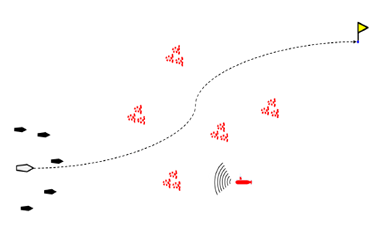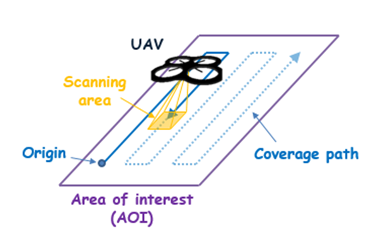연구 소개

- 연구
- 연구 소개
A Systematic Approach to Threat Modeling and Security Analysis for Software Defined Networking
- AI융합대학
- 2019-09-09
엄태훈 교수의 연구실에서 발표한 논문 "A Systematic Approach to Threat Modeling and Security Analysis for Software Defined Networking"이 "IEEE Access" 2019년 호에 게재되었다.

Software Defined Networking (SDN) extends capabilities of existing networks by providing various functionalities, such as flexible networking controls. However, there are many security threat vectors in SDN, including existing and emerging ones arising from new functionalities, that may hinder the use of SDN. To tackle this problem, many countermeasures have been developed to mitigate various threats faced in SDN. However, their effectiveness must be analyzed and compared to fully understand how security posture of SDN changes when the countermeasure is adopted. Also, it becomes difficult to optimize the security of SDN without using a systematic approach to evaluate the security posture of SDN. In this paper, we propose a novel framework to systematically model and analyze the security posture of SDN. We develop a novel graphical security model formalism named Threat Vector Hierarchical Attack Representation Model (TV-HARM), which provides a systematic approach to evaluate threats, attacks and countermeasures for SDN. The TV-HARM captures different threats and their combinations, enabling security risk assessment of SDN. In addition, we define three new security metrics to represent security of SDN. Our experimental results showed that the proposed security assessment framework can capture and evaluate various security threats to SDN, demonstrating the applicability and feasibility of the proposed framework.
-
Design of Warship Simulation Using Variable-Chromosome Genetic Algorithm
지승도 교수의 지능 시스템 연구실에서 발표한 논문 "Design of Warship Simulation Using Variable-Chromosome Genetic Algorithm"이 "Multi-Agent Systems" 2020년도 특집호에 게재되었다.
2019-10-02
논문 사이트로 이동
A genetic algorithm (GA) is a global search algorithm based on biological genetics. GAs are generally used for industrial applications, artificial neural networks, web applications, the defense industry, and so on. However, it is difficult to apply GAs to more complex situations because of the fixed number of chromosomes. In this research, in order to overcome this limitation, we propose a variable-chromosome GA with a chromosome attachment feature. Verification of the algorithm is carried out through anti-submarine high value unit (HVU) escort mission simulations. Ultimately, it is confirmed that the GA using the variable chromosome is more effective in dealing with highly complex missions, whereby the number of chromosomes gradually increases.
[Figure 1] Overall methodology
the chromosomes organized by genes. These chromosomes, which are loaded on each model, are composed of 10 random chromosomes for the first generation. There are 10 chromosomes in an individual for the first generation, however, more or less than 10 chromosomes can be implemented via attachment after some generations have passed. Accordingly, it is possible to achieve flexible evolution, as the number of chromosomes is increased or decreased as necessary.
[Figure 2] Mission scenario
To validate the proposed methodology, wetested an anti-submarineHVUescort mission simulation. A submarine has firepower that is almost equal to a fleet. Thus, there are many warships that are required to cope with submarines. In this case study, we allocate warships, an HVU, helicopters, false targets, and an enemy submarine to create a complex warfare environment, as shown in Figure above The false targets are allocated randomly in every simulation, however, the warships, HVU, helicopters, and enemy submarine are allocated at fixed positions.
-
Energy-Constrained Multi-UAV Coverage Path Planning for an Aerial Imagery Mission Using Column Generation
최영훈 교수의 IASL 연구실에서 발표한 논문 "Energy-Constrained Multi-UAV Coverage Path Planning for an Aerial Imagery Mission Using Column Generation"가 "Journal of Intelligent & Robotic Systems 2019"에 게재되었다.
2019-03-13
논문 사이트로 이동
[그림 1] ABECOM과 RBECOM의 경로 탐색 결과 비교
Journal of Intelligent & Robotic Systems에 실린 “Energy-Constrained Multi-UAV Coverage Path Planning for an Aerial Imagery Mission Using Column Generation” 연구에서는 UAV를 활용하여 특정 지역을 스캔하는 임무를 다루었다. 이러한 임무는 정찰, 영상/이미지 촬영, 수색/구조 등의 다양한 임무로 확장되어 활용될 수 있다. UAV를 이런 임무를 수행할 때에는 최대한 회전비행을 하는 횟수를 줄이는 것이 중요한데 기존의 선형계획법을 활용한 경로 생성 방법으로는 항공기의 회전비행 특성을 반영하기가 어려웠다. 그 이유는 회전의 유무는 직전에 방문했던 waypoint와 다음에 방문할 waypoint가 결정된 뒤에 알 수 있는데 이 조건을 선형으로 표현하기 힘들기 때문이다. 이 연구에서 linear programming과 dynamic programming을 결합한 column generation 알고리즘을 통하여 이 문제를 해결할 수 있음을 보였다.
